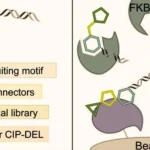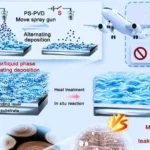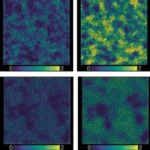Key Points:
- MIT-led study unveils methods to optimize efficiency and mitigate degradation in perovskite solar cells.
- Perovskite solar cells hold promise as lightweight, cost-effective alternatives to traditional silicon panels.
- Surface passivation techniques, including hexylammonium bromide solution, enhance energy conversion efficiency by mitigating defects.
- Insights pave the way for achieving higher efficiencies and scaling up production for commercial applications.
Perovskites, a versatile class of compounds with unique crystal structures, have long been hailed as a promising alternative to traditional silicon or cadmium telluride solar panels. While offering lightweight, cost-effective solutions, their application has been hindered by issues of longevity and efficiency. However, a recent study by researchers unveils groundbreaking methods to optimize efficiency and mitigate degradation in perovskite solar cells, paving the way for significant advancements in renewable energy technology.
Published in Nature Energy, the study delves into the nanoscale engineering of perovskite devices, shedding light on key insights to enhance their performance. Led by MIT postdoc Dane deQuilettes, along with professors Vladimir Bulovic and Moungi Bawendi, the research team collaborated across borders to uncover novel strategies for surface passivation, a crucial aspect in addressing perovskite degradation.
Perovskite solar cells have emerged as a contender to traditional silicon counterparts, boasting comparable efficiency in converting sunlight to electricity. However, their susceptibility to degradation and efficiency loss has posed significant challenges. Researchers have unlocked pathways to optimize efficiency and extend longevity by meticulously engineering the nanoscale structure of perovskite devices.
Central to the study is surface passivation, a technique aimed at mitigating defects that impede performance. The team uncovered methods to effectively passivate perovskite surfaces through meticulous experimentation and analysis, thereby reducing energy losses and enhancing overall efficiency.
One notable approach involves the application of hexylammonium bromide solution, which forms a thin passivating layer on the perovskite surface. This innovative technique mitigates defects and facilitates the controlled penetration of bromine, further enhancing electron transport and minimizing energy losses.
The implications of these findings are profound, offering a roadmap for fine-tuning perovskite surfaces to maximize energy conversion efficiency. While current efficiency records for perovskite solar cells hover around 24 to 26 percent, the study opens avenues for achieving even higher efficiencies, potentially nearing the theoretical limit of 30 percent. Moreover, the insights gleaned from this research hold promise for scaling up perovskite solar cell production for commercial applications.
The collaborative effort, spanning multiple institutions across the globe, underscores the collective endeavor to harness the full potential of perovskite solar technology. With continued advancements and refinements, perovskite solar cells may soon emerge as a prominent player in the renewable energy landscape, augmenting existing solar technologies and driving rapid deployment of sustainable energy solutions.












